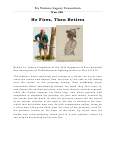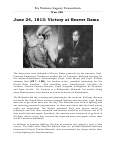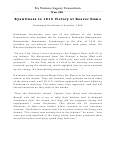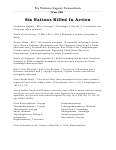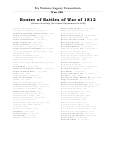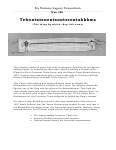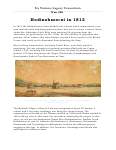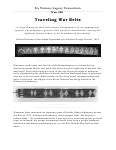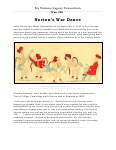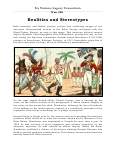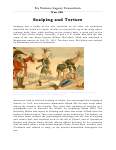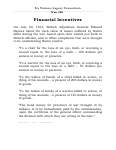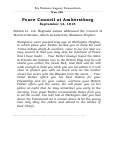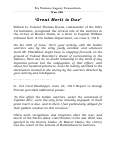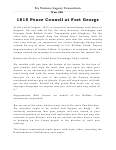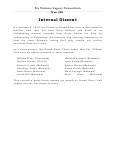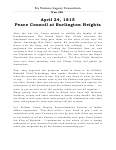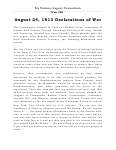Results
- Twenty-Sixth in a 62 part series, He Fires, Then Retires is a description by British Lt. James FitzGibbon of the Haudenosaunee (Iroquois Confederacy) warriors fighting tactics in the War of 1812.Twenty-Sixth in a 62 part series, He Fires, Then Retires is a …
- Thirtieth in a 62 part series, Victory at Beaver Dams describes how Mohawk and Grand River warriors defeated their American opponents in the Battle of Beaver DamsThirtieth in a 62 part series, Victory at Beaver Dams describes how …
- Thirty-First in a 62 part series, 1876 Reconciliation at Letchworth describes the historic 1876 council meeting in which leaders from the Mohawk and Seneca Nations attempted to repatriateThirty-First in a 62 part series, 1876 Reconciliation at Letchworth describes the …
- Twenty-Seventh in a 62 part series, Eyewitness to 1813 Victory at Beaver Dams is Officer Dominque Ducharme’s fist hand account of the Mohawk Warrior victory over the Americans in the 1813 Battle of BTwenty-Seventh in a 62 part series, Eyewitness to 1813 Victory at Beaver …
- Thirty-Third in a 62 part series, Pledge of the Crown Wampum Belt describes a wampum belt created by the British to represent the ongoing relationship with the Native community after the warThirty-Third in a 62 part series, Pledge of the Crown Wampum Belt …
- Fourteenth in a 62 part series, Six Nations Killed In Action is a list of Native Chiefs and Warriors who were killed in action during the War of 1812. This list was compiled using available informatiFourteenth in a 62 part series, Six Nations Killed In Action is …
- Fifteenth in a 62 part series, Roster of Battles of War of 1812 is a chronological list of the battles that occurred during the War of 1812.Fifteenth in a 62 part series, Roster of Battles of War of …
- Sixteenth in a 62 part series, Tehontatenentsonterontahkhwa describes the Wampum Friendship Belt, and its historical use by Haudenosaunee (Iroquois Confederacy) as a tool of diplomacy.Sixteenth in a 62 part series, Tehontatenentsonterontahkhwa describes the Wampum Friendship Belt, …
- Seventeenth in a 62 part series, Hodinohsonni in 1812 is a historical summary describing the state of Haudenosaunee (Iroquois Confederacy) community as it existed in 1812.Seventeenth in a 62 part series, Hodinohsonni in 1812 is a historical …
- Eighteenth in a 62 part series, Traveling War Belts describes the visual symbolism depicted in the designs of Wampum Belts, and outlines their relationship to Native spiritual ideasEighteenth in a 62 part series, Traveling War Belts describes the visual …
- Nineteenth in a 62 part series, Norton’s War Dance describes John Norton’s participation in a traditional native war dance.Nineteenth in a 62 part series, Norton’s War Dance describes John Norton’s …
- Twentieth in a 62 part series, Realities and Stereotypes describes the negative racial stereotypes of natives which existed in American and British political cartoon of the early 19th centuryTwentieth in a 62 part series, Realities and Stereotypes describes the negative …
- Twenty-First in a 62 part series, Scalping and Torture describes the use of scalp mutilation in the War of 1812. Employed primarily as a tool of intimidation and psychological warfare by all sides inTwenty-First in a 62 part series, Scalping and Torture describes the use …
- Twenty-Second in a 62 part series, Financial Incentives describes the system British officials had instituted to financially reimburse native warriors and the widows of deceased warriors for losses tTwenty-Second in a 62 part series, Financial Incentives describes the system British …
- Twenty-Third in a 62 part series, Peace Council at Amherstburg excerpts the speech given by British Lt. Col. Reginald James in front of the Council of Western Nations on September 14, 1815. The speecTwenty-Third in a 62 part series, Peace Council at Amherstburg excerpts the …
- Twenty-Fourth in a 62 part series, Great Merit is Due Excerpts quotes from letters by British military leaders acknowledging the enormous role Native Warriors had in ensuring a victory over AmericanTwenty-Fourth in a 62 part series, Great Merit is Due Excerpts quotes …
- Twenty-Fifth in a 62 part series, 1815 Peace Council at Fort George describes events of the 1815 Peace Council meeting held in Fort George. In attendance where representatives from various Six NationTwenty-Fifth in a 62 part series, 1815 Peace Council at Fort George …
- Thirty-Seventh in a 62 part series, Internal Dissent describes how the Six Nations Confederacy Chiefs created a list of community members who they felt were disloyal to the crown.Thirty-Seventh in a 62 part series, Internal Dissent describes how the Six …
- Thirty-Eighth in a 62 part series, Peace Council at Burlington Heights, Describes the events of the Peace Council meeting at Burlington Heights on April 24, 1815Thirty-Eighth in a 62 part series, Peace Council at Burlington Heights, Describes …
- Thirty-Ninth in a 62 part series, August 24, 1813 Declarations of War describes the declaration of War made against the Provinces of Upper and Lower Canada by The Confederacy Council of Chiefs at BufThirty-Ninth in a 62 part series, August 24, 1813 Declarations of War …
For more information on contributing data, please contact us at info@snpl.ca or 519-445-2954






